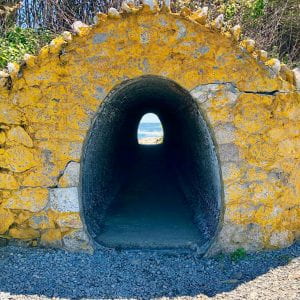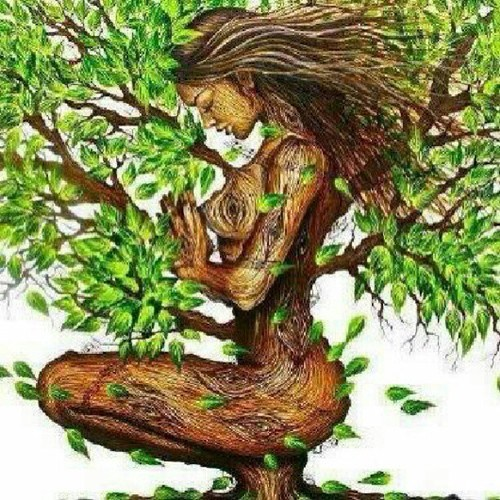When looking at this picture, I stared silently for about five minutes just thinking about the relation it has to the topic of vegetarian ecofeminism. The first thing that stood out to me was the white human like figure cutting the ham. The figure looks like a man and this brought my mind to the “Meat Heads” article, “for many men, meat is an inarguable symbol of masculinity” (Elsenberg). This picture highlights that quote to me because this man like figure is establishing his dominance over his “food”. The second thing that thing that I focused on was the fact that the figure was blank and just white. To me this represented the lack of empathy and compassion we as humans show other animals. The knife in the back of the ham depicts the man asserting his dominance and oppression over this animal. Showing the disregard for the animals in life. I think it is also no coincidence the proportions used in this image. The figure is so small and the knife and ham are massive in comparison I think this can mean many things, however to me personally I see it as we as humans are so minuscule and little in comparison to the rest of the animal life yet we control it because it feeds us literally and metaphorically.
When looking for gendered foods or eating practices I came across a site called Scroll.In, https://scroll.in/article/948289/steak-for-the-gentleman-salad-for-the-lady-how-foods-came-to-be-gendered
This article dives into the late 19th century and how dietary advice was the gateway to the gendered foods and practices that we know of today. I found it interesting but also weird that corporate marketing and magazines decided to market male and female tastes separately starting in 1870s. I think the biggest impact on the shift in marketing was the women entering the workforce. some examples of “women foods” are yogurt, salad, and fruit. “male foods” are things like chili, steak, and bacon.
In the Gaard article, the emphasis is made that all animals, pets, exotic, and farm-raised have absolutely no control over their lives. ecofeminists draw linkages between sexism and speciesism . the article emphasizes this idea by using an anecdote about a pet bird named Bella that Gaard see at a movie store. there is a huge quote that addresses the social control we use against other animals, choose what they consume, how they reproduce etc. she compares that to “slavery” . My biggest take away from Gaard’s article is that we are so deeply woven into our negative interactions with other animals that we should reduce animal cruelty and suffering as much as we can.
The Curtin article was more interesting to me and I would say I aligned more with his thought processes. Curtin expresses that ecofeminist perceive non-human animals and human relations as an idea of cultures and what that means to cultures. I think that his comparison of women and the oppression of non-human animals linking together helps envision the views ecofeminists have on the topic of animal suffering and vegetarianism.
I think American culture in particular does not acknowledge non-human animals as equal to humans. when we eat animals they are cleaned and packaged and there is no connection other than a source of food. However we mistreat them and control their lives. Just like both articles state there is a connection between oppression of women and animals.
bibliography
https://scroll.in/article/948289/steak-for-the-gentleman-salad-for-the-lady-how-foods-came-to-be-gendered
history and background of gendering of food.
https://www.refinery29.com/en-us/gendered-food-products-marketing-ploy
a photo album of horribly gendered marketing products involving food.







